Under The Giglio Sun
“Ciao!” came a voice from down the hill. A portly man in a bright red shirt with a shock of white hair emerged from behind a lemon tree.
He made his way slowly through the vines towards a rustic hut (or ‘capanno’), followed by two dogs, both wagging their tails.
“Ciao Francesco!” our guide called out. “Are you ready for us?”
We were standing at the top of his vineyard, Altura, on the western side of the island of Giglio off the Tuscan coast of Italy.
On either side russet-coloured vines ran down a steep slope to the Tyrrhenian sea. Vines have been cultivated on Giglio since Etruscan times and the wines were famous during the Roman era. During the middle ages they were the preferred wines of Popes, but during the last century the vineyards were neglected and overgrown by scrub.
Fifteen years ago our host, Francesco Carfagna, purchased the largest vineyard on the island and made it his mission to rebuild the ancient stone terraces and revive the ansonica uva vines.
As a child, he’d fallen in love with Giglio during the summer holidays when visiting with his parents. Formerly owner-chef of Osteria Arcobalena at Castello Giglio, Francesco now devotes all his time and energy to his vineyard and to making wines.
Our group consisted of seven women, all students from UNISG in Pollenzo, Piedmont, plus Pietro, our tall, dark-haired guide.
It was early November, well into autumn, and it was hot. The midday sun was high in the sky and the sea a silvery blue lake.
Francesco disappeared inside his hut and emerged after a few minutes carrying a large glass jug of water with pieces of diced lemon skin and pith floating on the top. He poured each of us a glass and encouraged us to eat the lemon pith.
“Welcome, my little grand-daughters!” he announced with twinkling brown eyes and a well-rounded English accent. “When I was young in the 1950s in Rome, workers would put lemon in their water and wine because it was so refreshing.”
After greeting each one of us individually, he asked us to help him carry a table from behind the hut and set it up on the vine- covered terrace outside the hut. He gave us a tablecloth, plates, cutlery and glasses to set the table, picked a bayleaf from the garden and went back inside to finish cooking the fish soup.
I followed him in, lured by the smell of sizzling onions. He added the bayleaf, a couple of chillies. a few cans of peeled tomatoes and some salt.
“In summer we add our own tomatoes,” he muttered.
These were left to simmer gently while he cleaned and scaled the fish, freshly caught that morning by a local fisherman: scorfano rosso (a bright red scorpion fish) sarago (white sea bream) and another one I couldn’t discern. He washed each one and added them whole to the sugo.
“This dish is similar to cacciucco, the famous fish soup from Livorno, a little further up the Tuscan coast,” he explained as he pottered around the kitchen.
“Some people add wine, but I never add wine when cooking fish.”
“Now let’s go outside and taste some wine,” he added, a little breathless.
He brought out three bottles: a young Ansonaco which he poured into a jug, a light red Chiaretto and a deep red Saverio, named after his father.
I chose the Ansonaco del Giglio, the cloudy golden-amber wine made from the native grape of the same name, and for which Francesco has become something of a legendary figure in Italian wine making circles.
It was unlike any wine I’d ever tasted. It had a slightly astringent smell but was surprisingly fresh and gentle, made without sulphites or chemicals.
“There are conventional wines,” said Francesco. “And then there are wines like mine.
“People say so much blah blah blah when they talk about wine, but no-one ever talks about the heart and soul of the winemaker,” he said.
“It’s the same if you have a violin and nobody plays it. The soul of the winemaker is the main ingredient.”
A platter of bruschetta (oval-shaped Tuscan bread charred on a griddle) had been placed on the table, a simple accompaniment to the wine. He asked us to rub garlic over some of the pieces.
Finally, it was time for the glistening red fish soup. Francesco carried it to the table, majestically set it down in the centre and stood the pieces of bruschetta up around the inside of the pan.
“This is its crown,” he declared, with a smile.
He took each fish from the pan, placed it on a platter and carefully removed the fish from the bones.
“Look how white it is! This is real fish, simple and good. Please eat before it gets cold.”
We were each handed a plate with the prepared fish. We ladled over some of the glorious deep red sugo and took a piece of the garlicky bruschetta.
Suddenly, the little grand-daughters were quiet. For me, the first taste of that sublime dish was a moment of bliss.
I complemented it with a glass of Francesco’s Rosso Saverio. As with the Ansonaco del Giglio, this was a totally original wine. In the words of one connoisseur, “It’s not a powerhouse Italian red, but one that shows what a dedicated producer with a vision can do.”
After our long lunch under the sun, Francesco took us to his cantina to see where he made his wines.
“Shh…listen to the wine,” he said. “It’s living. It hears and feels our hearts.”
And I could hear and feel his.

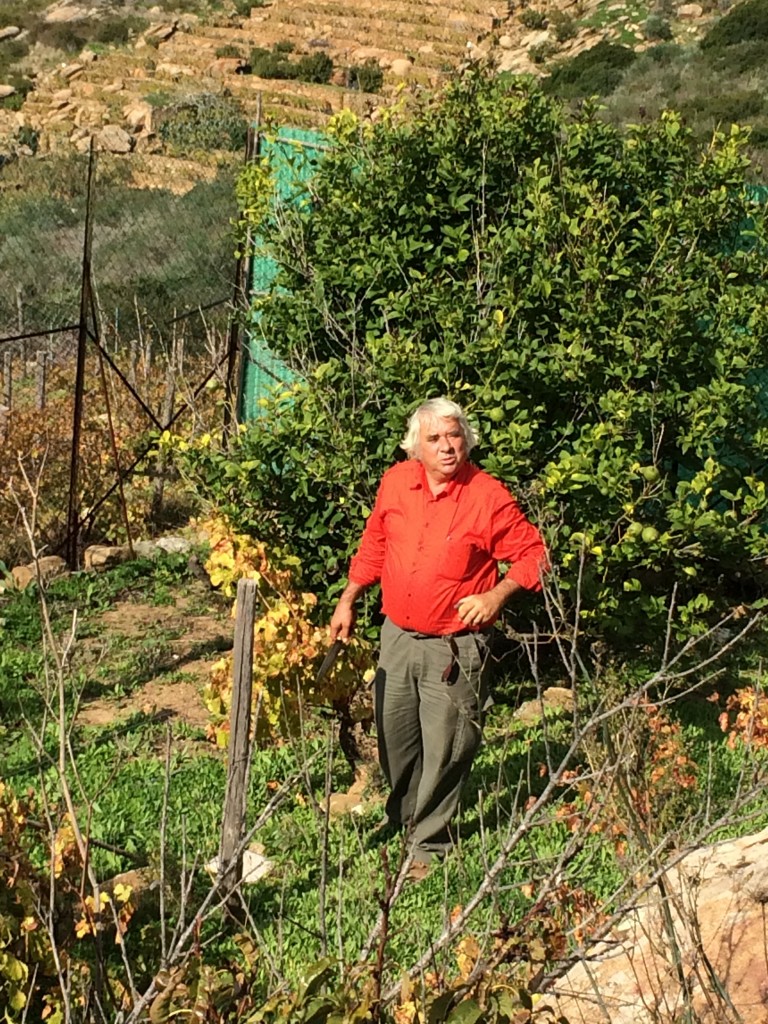
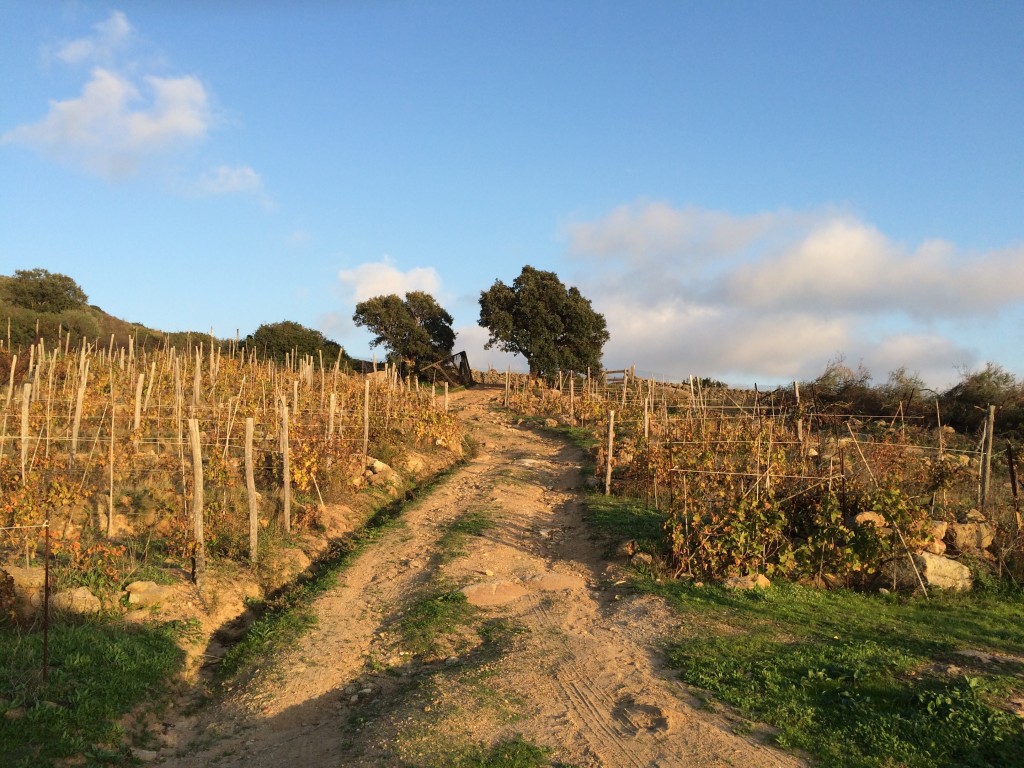
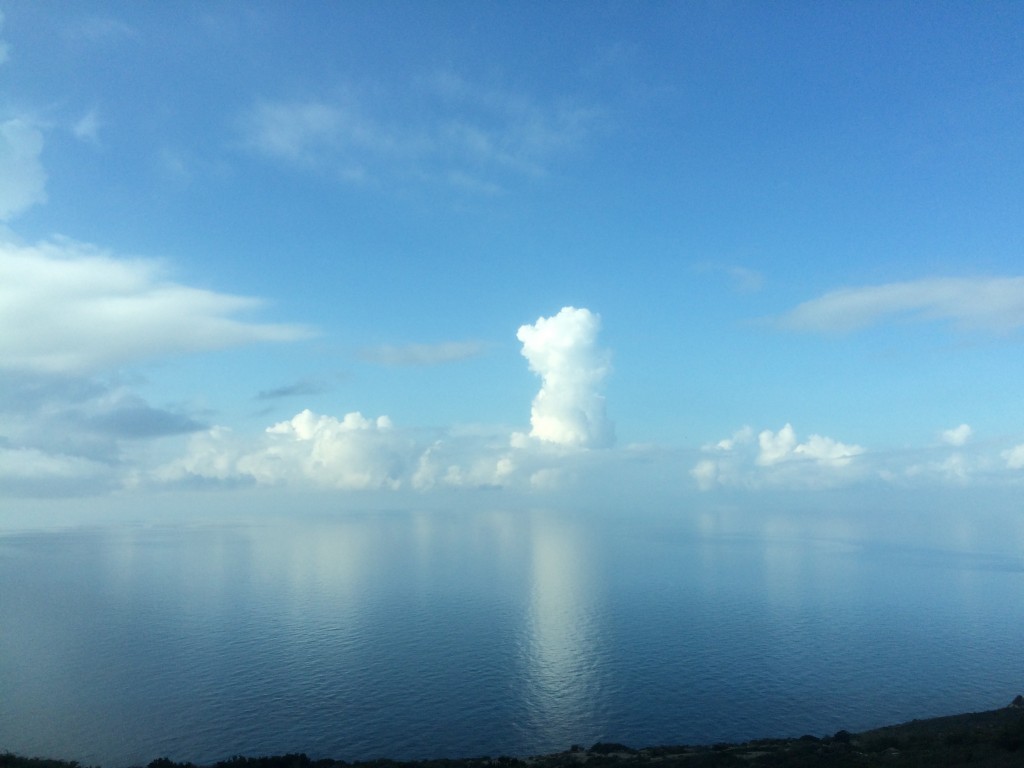
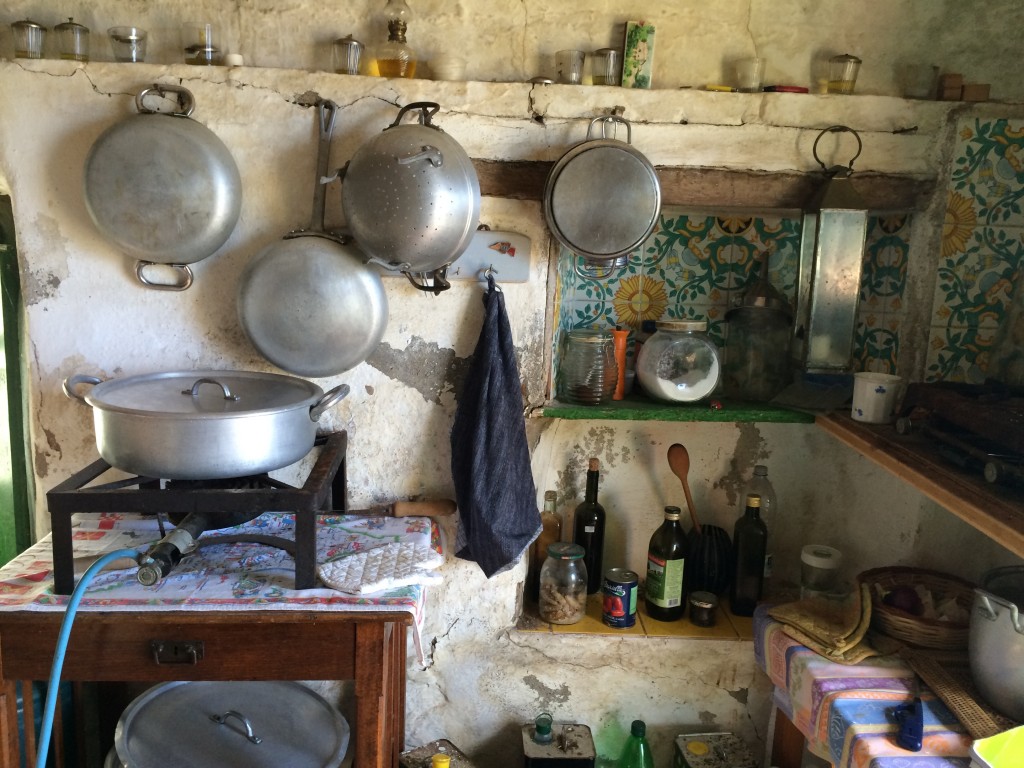
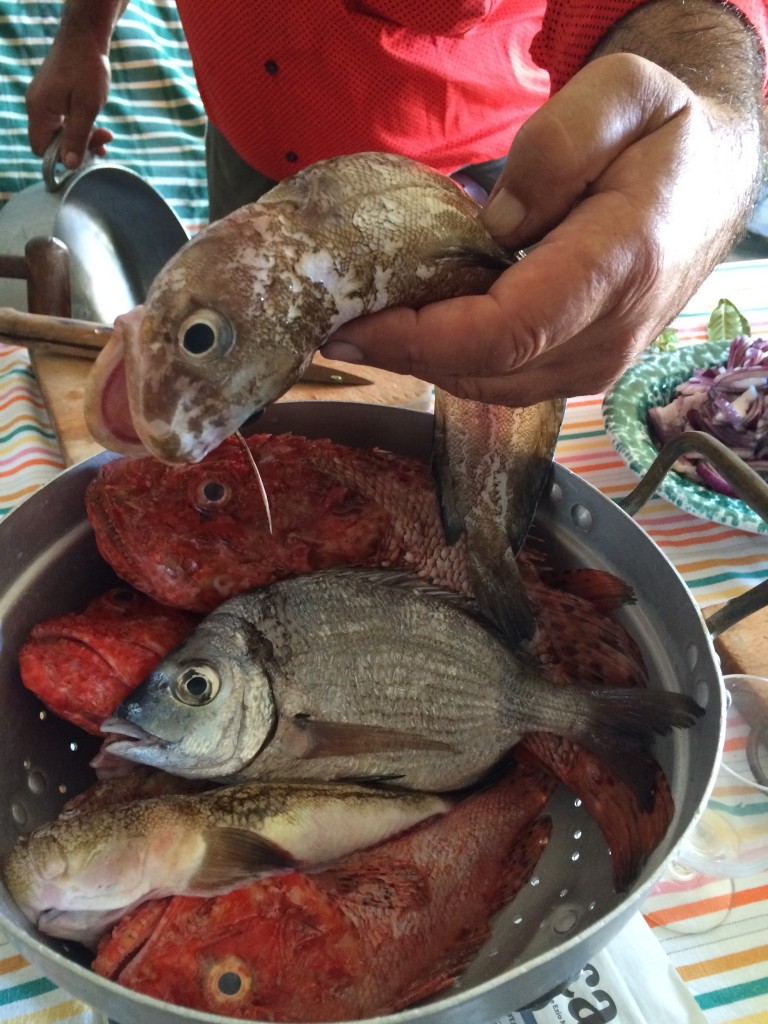
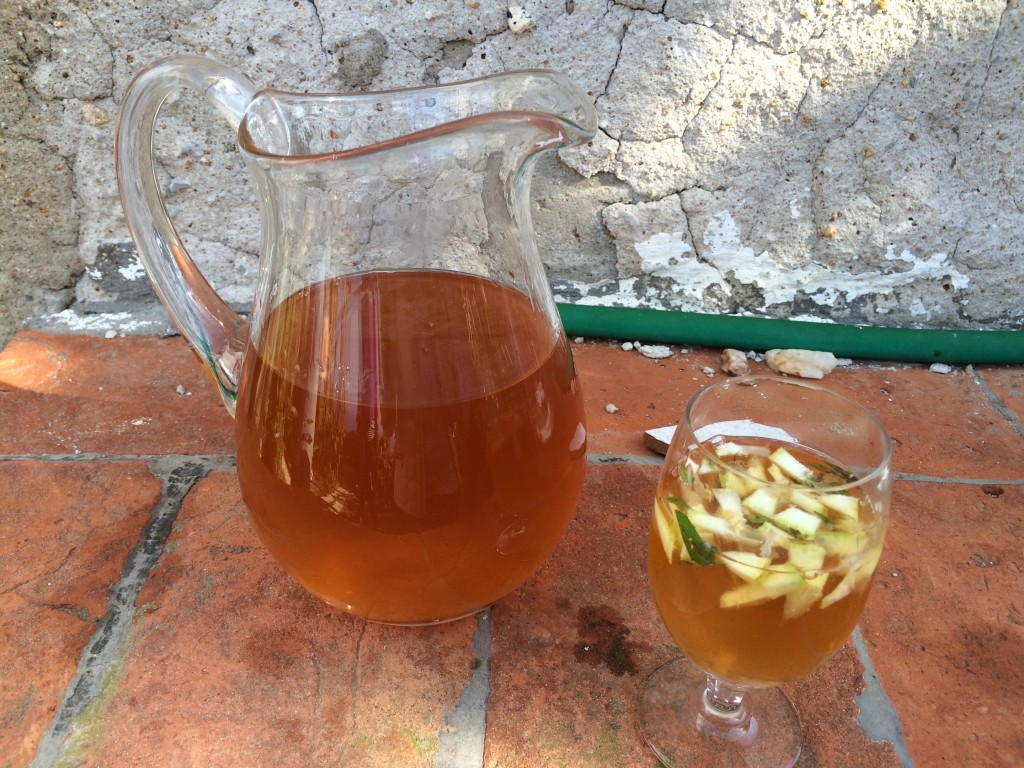
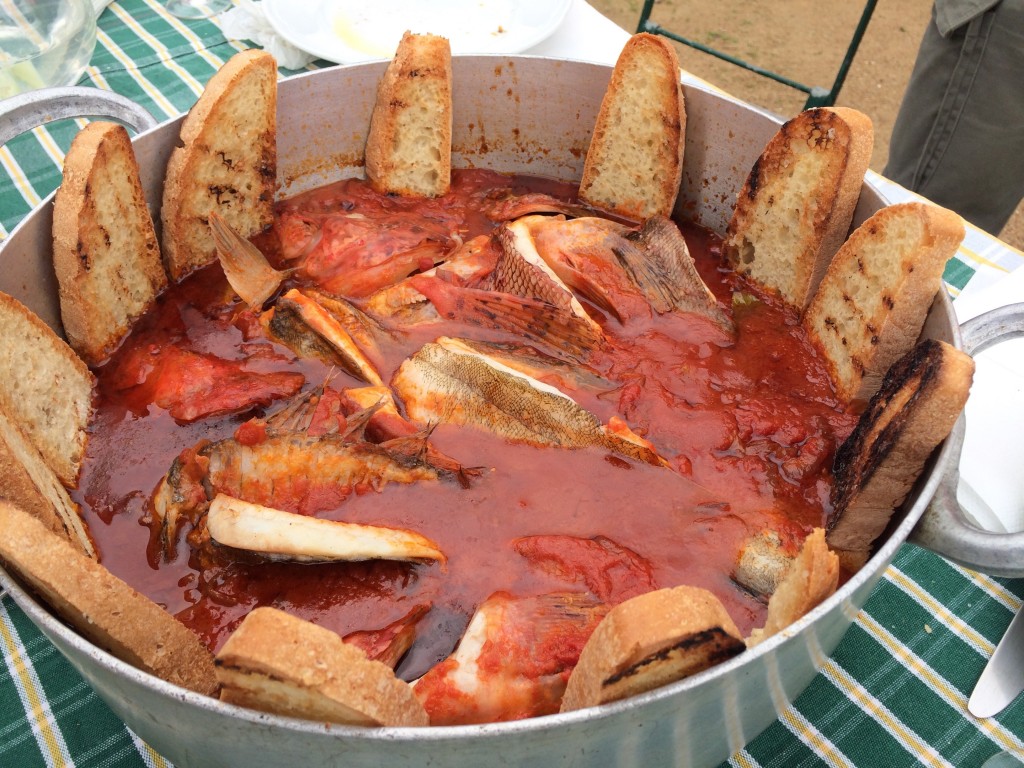
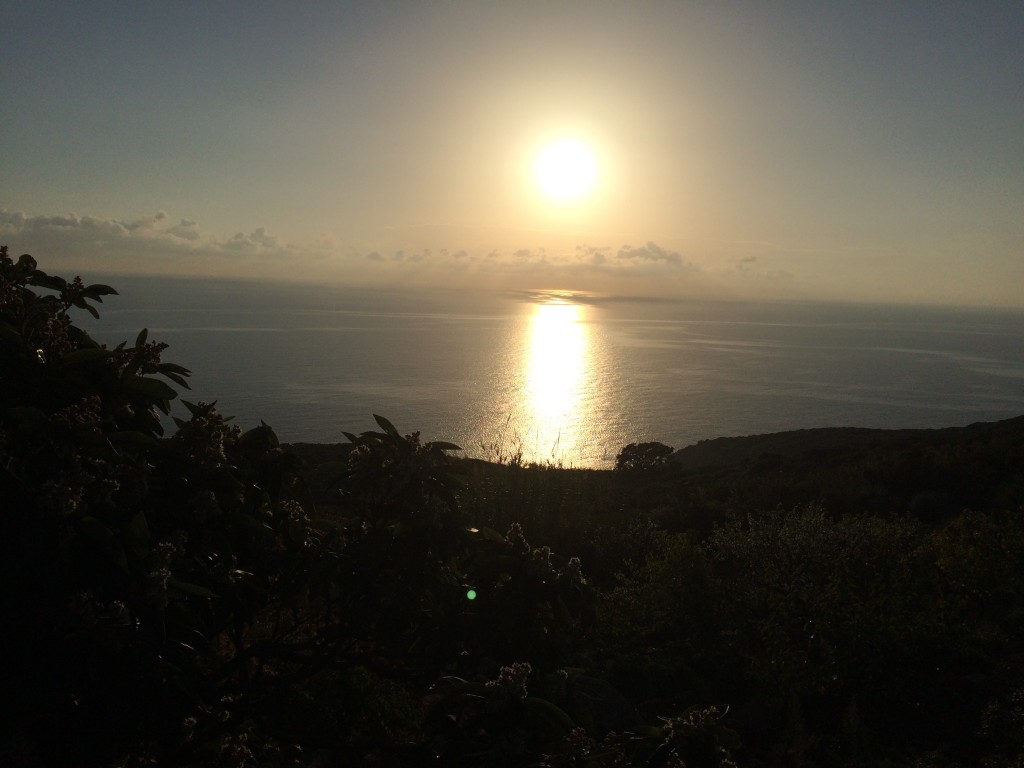
Thank you Sheridan for generously sharing your adventures and your recipes. Love the photographs, the warmth in your style and the way you help the reader be a part of it all.
Thank you, Gina – much appreciated!